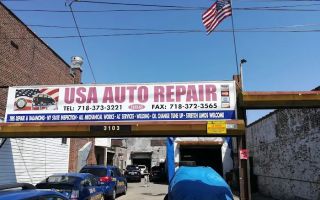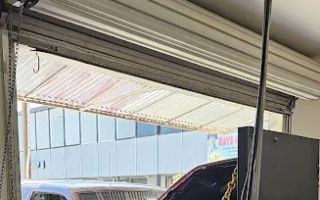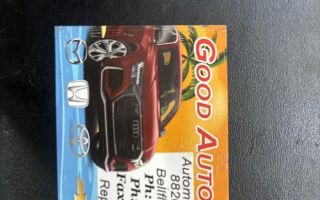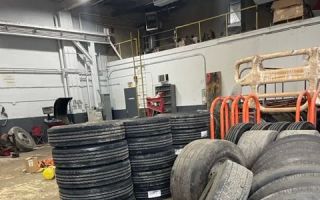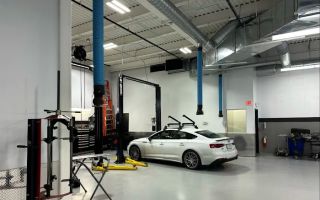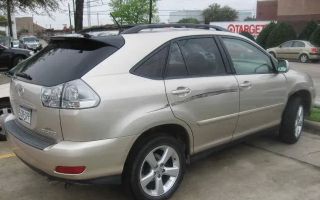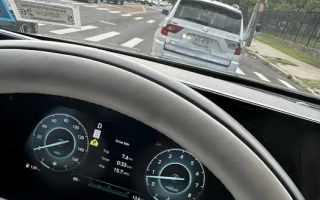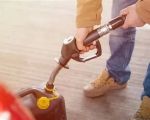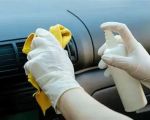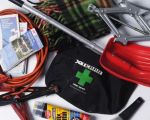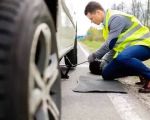What to Do Immediately After a Tire Blowout
Imagine you’re driving down the highway, enjoying a smooth ride, when suddenly, there’s a loud pop, and your car starts to swerve. A tire blowout! This can be one of the most stressful and dangerous situations you can encounter on the road. I’ve been there myself, and it can be a truly terrifying experience. However, over time, I’ve learned that how you react in those first moments can make a huge difference in staying safe and avoiding further damage to your car. Let me walk you through the steps you should take after experiencing a tire blowout and share a personal story of what worked for me during one of my encounters.

MR. TIRE INC.
2078 New York Ave, Huntington Station, NY 11746, USA
1. Stay Calm and Maintain Control of the Vehicle
When the tire blows out, your first instinct might be to panic, but staying calm is crucial. It’s important to understand that while a blowout can be alarming, it’s not necessarily an emergency that will result in a crash—if you handle it correctly. The key is to remain composed and focus on maintaining control of your vehicle.
During my first tire blowout, I was driving on a busy highway when the sudden loud noise nearly threw me into a panic. The car veered to the side, and my heart raced. But I quickly remembered what I had read and learned: you need to grip the steering wheel firmly with both hands and resist the urge to slam on the brakes. Instead, slowly ease off the gas pedal and let the car decelerate naturally. It’s important to avoid jerking the wheel or making sudden movements, as this could cause you to lose control.

MR. TIRE INC.
2078 New York Ave, Huntington Station, NY 11746, USA
2. Gradually Slow Down and Pull Over to a Safe Location
After a blowout, you’ll notice that the car will likely start pulling to one side. This happens because the damaged tire will cause the car to lose balance. Don’t fight this—let the car gradually slow down by easing off the gas. In my experience, trying to brake suddenly during a blowout can actually make things worse, especially at high speeds.
Once the car slows down enough, start steering carefully toward the side of the road. It’s essential to find a safe spot where you can park away from traffic. I remember during one of my own blowouts, I made the mistake of trying to get off the highway too quickly, which put me closer to the shoulder and a busy lane of traffic. It was a bit of a close call, so now I always aim for wide shoulders or parking lots if possible.
If you’re on a highway, look for any exit ramps or rest areas that might offer more space and safety. If it’s dark or visibility is poor, make sure your hazard lights are on so other drivers can spot you.
3. Turn on Hazard Lights and Assess the Damage
As soon as your car is safely stopped, one of the first things you should do is turn on your hazard lights. This is a signal to other drivers that there’s something wrong with your vehicle. In my experience, activating your hazard lights immediately is important not only for your safety but also to ensure that you’re visible to passing traffic. It’s easy to overlook in the heat of the moment, but it’s a step you won’t want to miss.
Once your hazard lights are on, it’s time to assess the damage. Before getting out of the car, make sure the area around you is safe. If you're on a busy highway, don’t risk stepping out until you're certain it’s safe. For me, there were moments when I waited for traffic to clear before stepping outside, just to avoid the risk of an accident. When it’s safe, carefully examine the tire to confirm that it is indeed a blowout and check if any other tires have been affected. If there’s visible damage to the rim or the sidewall of the tire, it’s best to avoid driving the vehicle until a professional has examined it.
4. Changing the Tire or Calling for Help
If you have a spare tire and know how to change it, this is the point where you can get to work. However, if you’re unsure about how to proceed or if changing the tire seems too complicated, don’t hesitate to call for roadside assistance. I've found that the peace of mind that comes from knowing professionals are on their way is well worth the cost. I remember one time when I attempted to change the tire myself, but after struggling with the lug nuts, I realized I was better off calling a towing company. I quickly learned that roadside assistance providers can get to the scene much faster than I had anticipated and at a fair price.
If you decide to change the tire yourself, make sure your vehicle is secure by placing wheel chocks or bricks in front of or behind the tires. This helps prevent the car from rolling while you work on it. It’s also essential to use the right tools: a jack, a lug wrench, and a properly inflated spare tire. I’ve made the mistake of not ensuring the spare tire was fully inflated once, and that caused more frustration later. Always check the condition of your spare tire before heading out on long trips.
5. When to Call for Roadside Assistance
If you’re unable to change the tire yourself or if you don't have a spare, calling for professional roadside assistance is the best option. Roadside assistance services are equipped to handle tire blowouts and can provide emergency towing or a tire replacement service if necessary. I remember the time I was on a long road trip and had no idea how to replace the tire. I reached out to my roadside assistance service, and within 30 minutes, a tow truck was there to help. The convenience and reliability of having professional help arrive in such a short time made the experience much less stressful.
6. Post-Blowout: Safety Considerations and Next Steps
Once the blowout has been handled, whether you changed the tire yourself or had a professional assist you, there are a few important safety checks you should make before getting back on the road. Check the condition of all your tires regularly, especially before long trips, to avoid future blowouts. I make it a habit to check the air pressure in my tires before heading out on the road, as proper inflation can prevent many tire issues.
Additionally, after a blowout, take your car to a mechanic to ensure that there are no further issues with your vehicle. Sometimes, a blowout can cause hidden damage to the rim or suspension, and it’s always safer to have a professional inspect the car. I’ve learned that taking this extra step can help avoid unexpected problems later down the road.
In conclusion, experiencing a tire blowout is stressful, but knowing the right steps to take can significantly reduce the risks and help you manage the situation safely. From staying calm to calling for roadside assistance, these steps have saved me from many stressful situations. It’s always a good idea to be prepared and knowledgeable about how to handle such emergencies, ensuring your safety and peace of mind on the road.





